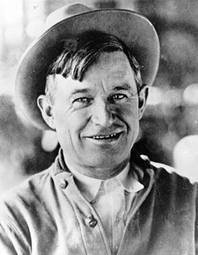Yesterday we topped at 63º.
A parachute is a device used to slow the motion of an object through an atmosphere by creating drag or, in a ram-air parachute, aerodynamic lift. A major application is to support people, for recreation or as a safety device for aviators, who can exit from an aircraft at height and descend safely to earth.
A parachute is usually made of a light, strong fabric. Early parachutes were made of silk. The most common fabric today is nylon. A parachute's canopy is typically dome-shaped, but some are rectangles, inverted domes, and other shapes.
A variety of loads are attached to parachutes, including people, food, equipment, space capsules, and bombs.
History
Middle Ages
In 852, in Córdoba, Spain, the Moorish man Armen Firman attempted unsuccessfully to fly by jumping from a tower while wearing a large cloak. It was recorded that "there was enough air in the folds of his cloak to prevent great injury when he reached the ground."
Early Renaissance
The earliest evidence for the true parachute dates back to the Renaissance period. The oldest parachute design appears in an anonymous manuscript from 1470s Renaissance Italy (British Library, Add MS 34113, fol. 200v), showing a free-hanging man clutching a crossbar frame attached to a conical canopy. As a safety measure, four straps ran from the ends of the rods to a waist belt. Although the surface area of the parachute design appears to be too small to offer effective air resistance and the wooden base-frame is superfluous and potentially harmful, the basic concept of a working parachute is apparent.
The design is a marked improvement over another folio (189v), which depicts a man trying to break the force of his fall using two long cloth streamers fastened to two bars, which he grips with his hands.
Shortly after, a more sophisticated parachute was sketched by the polymath Leonardo da Vinci in his Codex Atlanticus (fol. 381v) dated to ca. 1485. Here, the scale of the parachute is in a more favorable proportion to the weight of the jumper. A square wooden frame, which alters the shape of the parachute from conical to pyramidal, held open Leonardo's canopy. It is not known whether the Italian inventor was influenced by the earlier design, but he may have learned about the idea through the intensive oral communication among artist-engineers of the time. The feasibility of Leonardo's pyramidal design was successfully tested in 2000 by Briton Adrian Nicholas and again in 2008 by the Swiss skydiver Olivier Vietti-Teppa. According to historian of technology Lynn White, these conical and pyramidal designs, much more elaborate than early artistic jumps with rigid parasols in Asia, mark the origin of "the parachute as we know it."
If you want to read a whole lot more, go here: https://en.wikipedia.org/wiki/Parachute
- 4 (3-ounce) packages ramen noodles, seasoning packet discarded
- 1 tablespoon olive oil
- 2 eggs
- 1/2 cup grated Parmesan cheese
- 1 teaspoon garlic powder
- 1 cup pizza sauce
- 12 -14 slices pepperoni
- 1 cup sliced mushrooms, sauteed
- 1 cup shredded mozzarella cheese
- Preheat oven to 400º. In a large pot of boiling water, add ramen noodles and cook for 2-3 minutes, or until just soft, then drain and toss with oil.
- In a large bowl, combine eggs, Parmesan cheese, and garlic powder; mix well. Add noodles and toss until evenly coated.
- Place noodle mixture onto pizza pan to form a crust. Spread pizza sauce evenly over crust. Top with pepperoni and mushrooms.
- Bake 25 minutes, top with mozzarella cheese, then bake for 5-8 more minutes or until cheese melts. Remove from oven and let cool 5 minutes before slicing into wedges.
On November 4th, we celebrate the sweet holiday, National Candy Day. Candies have a long history of attracting us with their bright colors and delightful flavors. They also come in a variety of fun sizes and shapes.
Candy History
In the late 13th century, Middle English first began using the word candy. Borrowed from the Old French cucre candi, it is derived in turn from Persian Qand and Qandi, cane sugar.
People use the term candy as a broad category. We treat candy bars, chocolates, licorice, sour candies, salty candies, tart candies, hard candies, taffies, gumdrops, marshmallows and much more as candy.
However, sugar was not always readily available. So instead, people made the first candies from honey. Candymakers coated nuts, fruits and flowers with honey. This method preserved the flowers and nuts or created forms of candy. Today, we still create these confections, but we typically use them as a garnish.
Originally a form of medicine, candy calmed the digestive system or cooled a sore throat. At that time, combined with spices and sugar, candy only appeared in the purses and the dishes of the wealthy.
By the 18th century, the first candy likely came to America from Britain and France. At the time, people made the simplest form of candy from crystallized sugar – rock candy. However, even the most basic form of sugar was considered a luxury and only attainable by the wealthy.
Since 1979, the world has produced more sugar than can be sold, making it very attainable and cheap.
Candy Inventions
With the advent of the industrial revolution, many advances improved the availability of sugar. By the 1830s, markets opened, and the candy business underwent a drastic change. Not only did the price of candy drop, but penny candies targeted children.
- 1847 – Oliver R. Chase invents and patents the first candy press in America. The Boston inventor’s creation made making different lozenge shapes possible
- 1851 – Confectioners begin using a revolving steam pan to assist in boiling sugar.
- 1897 – William Morrison and John C. Wharton from Nashville invent the first cotton candy machine. At the time, the fluffy puffs of spun sugar were called Fairy Floss.
Unforgettable Candies
- M & M’s – Forrest Mars, Sr., and William Murrie developed these milk chocolate drops with the colorful candy coating following the Spanish Civil War. They stamped the new candy with the initials of their surnames. In 1941, they debuted the candies, and soon after, American soldiers serving in the Second World War received them as part of their rations.
- Reese’s Peanut Butter Cups – Hershey’s company first manufactured these round chocolate disks filled with sweet, creamy peanut butter filling in 1928.
- Christmas Candies – These hard candies come in the shape of ribbons or lozenges (thank you Oliver R. Chase!) and add a sweet, colorful memory to the holiday season.
- Necco Wafers – Despite being chalky and not too sweet, this candy still tops many people’s lists.
- PEZ – Not only does this tiny candy hit the sweet spot, but it also comes with a dispenser that often represents other iconic and inspirational characters.
- Lifesavers – Another hard candy, this sweet circular lozenge with a hole in it finds its way into mom’s purse and the stocking hung on the mantel.
HOW TO OBSERVE NATIONAL CANDY DAY
Four days after Halloween, you should be able to celebrate this day. Either you have leftover candy or can sneak some of your kid’s stash to celebrate. You can also scan the sales of Halloween candy at your local stores. Or, invite some friends to enjoy their favorite candies with you! While you’re celebrating, be sure to use #NationalCandyDay to post on social media.
NATIONAL CANDY DAY HISTORY
National Day Calendar® continues researching the origins of this sweet-tasting holiday.
Candy FAQ
Q. What are candy buttons?
A. Candy buttons are small dots of colored sugar on a strip of waxed paper. Originally made by the New England Confectionery Company (Necco), which opened in 1871, the candy is now made by Doscheser Candies (1893).
Q. What is the oldest candy company in the United States?
A. The answer to this question is found in Salem, Massachusetts. The Ye Old Pepper Companie started in 1806 when Mary Spencer arrived in Salem after a shipwreck. She began peddling a rock candy called “Salem Gibralter” (incidentally the first candy sold commercially in the U.S.) from a church. Her son sold the company in 1830 to John William Pepper. Then in the early 20th century, George Burkinshaw purchased The Ye Old Pepper Companie (then called the George W. Pepper Companie) and renamed it. It’s been operated by the same family since.
Q. What does M&M stand for?
A. The initials in the candy-coated chocolate stand for Mars and Murrie – Forrest Mars Sr. with the Mars candy company and William Murrie, president of the Hershey company.
Q. Why did the government ration chocolate during World War II?
A. The government rationed many items required for use by the military including meat, leather, rubber, gasoline and chocolate. Chocolate served as an emergency food source in the troops’ rations. Alternatively, it also provided a morale boost while serving so far from home.

















